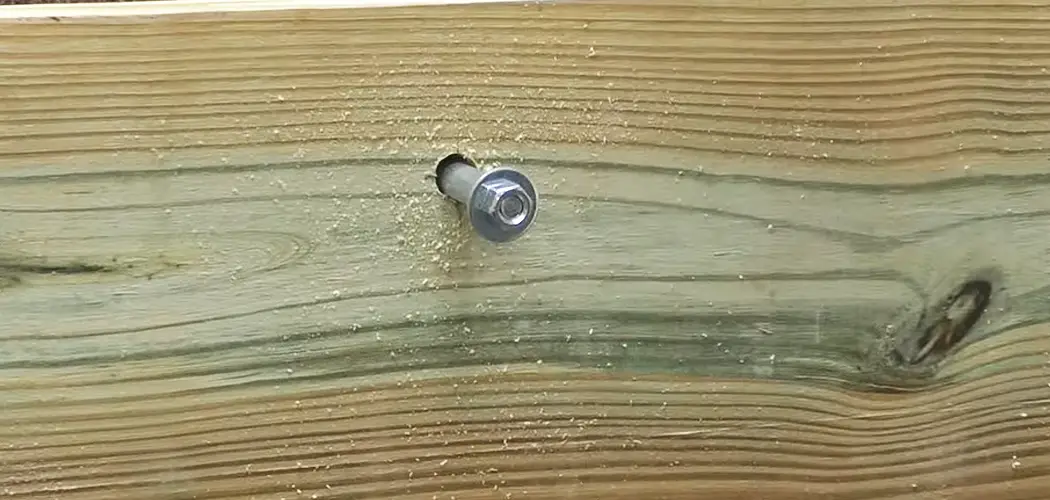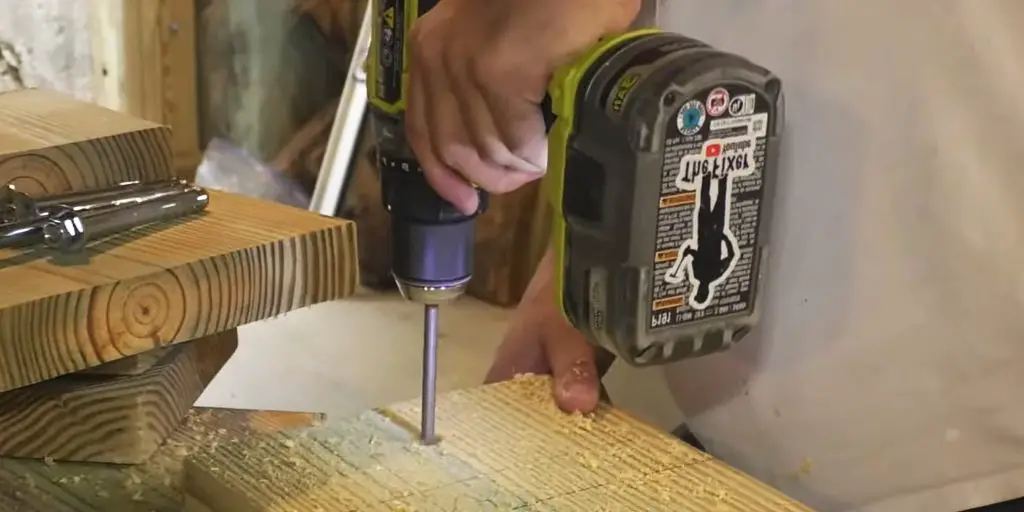Using expansion screws in wood can be a game changer for many home improvement projects. I remember the first time I worked with them; my neighbor, who’s a seasoned DIY enthusiast, shared some tips that made the process a lot easier and more secure. Today, I’ll share everything you need to know about using expansion screws in wood, from what they are to how to install them.

What Are Expansion Screws?
Expansion screws are unique fasteners designed to expand when you tighten them. This expansion helps them grip the material tightly, which makes them ideal for applications where you need extra strength. Unlike regular screws, which rely solely on friction to stay in place, expansion screws provide a more secure, lasting hold.
They are perfect for attaching heavier objects to wood surfaces, such as bookshelves, furniture, or even outdoor equipment.
I learned from a close friend who’s into woodworking that expansion screws are a great choice for projects requiring a solid, durable hold. They are also easier to use than some other fasteners, which makes them great for beginners and DIYers like me.
Why Use Expansion Screws?
There are many reasons why expansion screws are a smart choice for wood projects:
- Secure Hold: When tightened, they expand and hold tightly, making them much more reliable than regular screws.
- Durability: They are designed to stay in place for the long term, even under pressure or heavy weight.
- Ease of Use: Unlike traditional anchors or bolts, expansion screws are straightforward to install and don’t require special tools or advanced skills.
- Versatility: Whether you’re securing a shelf or hanging a heavy piece of furniture, expansion screws are up for the job.
Tools You’ll Need
Before you start, gather these basic tools. I learned from my neighbor that having everything ready makes the job a lot smoother:
- Drill
- Drill bits (make sure to select the correct size for your screw)
- Screwdriver
- Expansion screws (choose the right size for your task)
- Measuring tape (to mark where you’ll drill)
- Pencil (to mark your drill spots)
Step-by-Step Guide to Using Expansion Screws in Wood
Now let’s get into the process. Follow these easy steps to use expansion screws in wood:
Step 1: Measure and Mark the Spot
First, decide where you want to place the screw. Use a pencil to mark the spot on the wood. This will help ensure that your hole is drilled in the correct location. My neighbor always emphasizes that accurate measurements are key to avoiding mistakes later on.
Step 2: Select the Right Drill Bit
Choose a drill bit that’s slightly smaller than the expansion screw. If the hole is too big, the screw won’t expand properly, and if it’s too small, the screw won’t fit. My friend gave me this advice: “Always match the drill bit to the size of the screw you plan to use.”
Step 3: Drill the Hole
Once you’ve marked the spot, carefully drill the hole. Keep your drill steady to make sure the hole is straight. A crooked hole can make the screw misalign and affect its hold. My first attempt wasn’t perfect, but after a few tries, I learned that a steady hand makes all the difference.

Step 4: Insert the Expansion Screw
Now, take the expansion screw and insert it into the hole. Use your screwdriver to turn the screw. As you tighten it, the screw will expand and create a tight fit. Be patient, and avoid over-tightening the screw, as this could damage the wood. My neighbor always reminds me, “Don’t rush; it’s better to tighten slowly and carefully.”
Step 5: Tighten the Screw
Keep turning the screw until it’s secure, but remember not to over-tighten. Tighten just enough so that it feels solid. If you over-tighten, you could crack or split the wood. A little patience goes a long way here.
Expansion Screw Size & Pilot Hole Size Chart
| Screw Diameter (mm) | Pilot Hole Size (mm) | Screw Length (mm) |
| 4.0 | 3.0 | 30-40 |
| 5.0 | 4.0 | 40-50 |
| 6.0 | 5.0 | 50-60 |
| 8.0 | 6.5 | 60-80 |
| 10.0 | 8.0 | 80-100 |
This table helps you choose the right pilot hole size based on the diameter of your expansion screw. The screw length is usually chosen based on the thickness of the material you’re fastening, so it’s important to ensure that the screw length matches your project.
Safety Tips for Using Expansion Screws
Before you begin, it’s important to prioritize safety. I learned these safety tips from my friend, who’s an expert when it comes to home improvement:
- Wear Safety Gear: Always wear safety goggles to protect your eyes from dust or debris. Gloves will protect your hands from splinters.
- Check for Electrical Wiring or Plumbing: Always check the area for hidden pipes or wires before drilling. You don’t want to accidentally hit a wire.
- Work in a Well-Ventilated Area: If you’re drilling near any treated wood or adhesives, make sure you have proper ventilation to avoid inhaling fumes.
Tips for Successful Installation
Here are some additional tips I’ve picked up along the way:
- Choose the Right Size: Make sure you’re using the correct screw size for your project. Using the wrong size can lead to loose fittings or even damaged wood.
- Don’t Over-Tighten: Tightening too much can cause the screw to strip or the wood to crack. A good rule of thumb is to stop tightening once the screw feels secure.
- Use a Drill with Adjustable Speed: If you’re using larger screws, reduce the speed to avoid overheating the material.
Common Mistakes to Avoid
Like me, you might make a few mistakes when starting. Here are some common ones to watch out for:
- Wrong Drill Bit Size: If the hole is too big, the screw won’t grip the wood properly. If it’s too small, you’ll struggle to insert the screw.
- Drilling Crooked Holes: A crooked hole can make the screw misalign. Always drill straight!
- Over-Tightening: Over-tightening can crack the wood and damage the screw. Tighten it just enough for a firm hold.
Frequently Asked Questions (FAQ)
What Are Expansion Screws Made of?
Expansion screws are usually made from zinc-plated steel for indoor use and stainless steel for outdoor use. Stainless steel is more resistant to rust and corrosion, making it ideal for wet or outdoor environments.
Can I Use Expansion Screws on Softwood?
Yes, expansion screws work well with softwoods like pine or cedar. Just make sure to use the correct screw size and drill a pilot hole to prevent splitting.
What Happens if the Screw Strips the Hole?
If the hole gets stripped, fill it with wood filler or epoxy and let it dry. Then, drill a new hole and insert the screw again. Alternatively, you can use a larger screw if needed.
Can I Use Expansion Screws Outdoors?
Yes, but make sure to use stainless steel expansion screws for outdoor applications, as they resist rust and are more durable in harsh conditions.
Conclusion
Now that you know how to use expansion screws in wood, you’re ready to tackle your next DIY project with confidence. Whether you’re securing furniture, hanging shelves, or attaching something heavy, expansion screws provide a secure and durable solution.
If you found this guide helpful, don’t forget to share it with your friends and family. If you have any tips or suggestions, leave a comment below! Happy DIY-ing!
